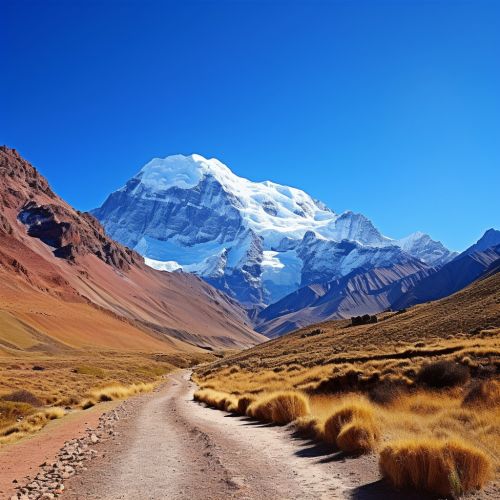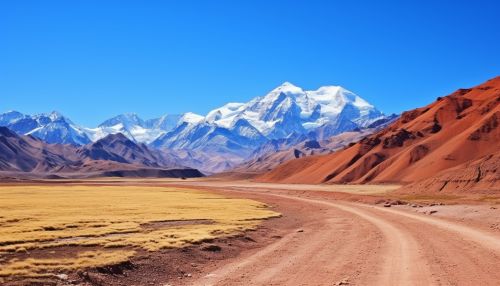Mount Aconcagua
Geography
Mount Aconcagua is the highest mountain outside of Asia, being the tallest in both the Southern and Western Hemispheres with a height of approximately 6,960.8 meters. It is located in the Andes mountain range, in the Argentine province of Mendoza, and lies 112 kilometers northwest of the provincial capital, also named Mendoza. The mountain is part of the Aconcagua Provincial Park.


Geology
The geology of Mount Aconcagua is primarily composed of layers of Andesite, a type of volcanic rock. The mountain is a part of the Principal Cordillera, a mountain range that is part of the larger Andes range. The Andes were formed during the Andean orogeny, a major mountain-building event that was the result of plate tectonic forces during the late Mesozoic and Cenozoic eras.
Climbing History
The first recorded ascent of Aconcagua was in 1897 by a European expedition led by the British mountaineer Edward FitzGerald. The highest peak, which is now known as the "FitzGerald" or "North" summit, was reached by the Swiss guide Matthias Zurbriggen on January 14, 1897. Since then, Aconcagua has become a popular destination for climbers due to its relative accessibility and the lack of technical climbing routes on the Normal Route.
Climbing Routes
There are multiple routes to reach the summit of Mount Aconcagua, but the two most popular are the Normal Route and the Polish Glacier Route. The Normal Route, also known as the Northwest Route, is the most frequently used path. It begins at the Horcones entrance to Aconcagua Provincial Park, follows the Lower Horcones Valley, ascends to Plaza de Mulas base camp, and then proceeds to the summit via the northwestern ridge.
The Polish Glacier Route is more challenging, requiring climbers to ascend the eastern face of the mountain, which is covered by a large glacier. This route is less frequently used due to its technical difficulty and the higher risks associated with climbing on glacial terrain.
Climate
The climate of Mount Aconcagua is affected by its high altitude, which results in extremely low temperatures, especially during the winter months of June to August. The mountain has a cold semi-arid climate (Köppen BSk) with large diurnal temperature variation. The lower regions of the mountain, up to around 3,500 meters, are characterized by a cold steppe climate.
Flora and Fauna
Despite the harsh climate and high altitude, Mount Aconcagua supports a variety of plant and animal life. The lower slopes of the mountain are home to several species of hardy shrubs and grasses. As the altitude increases, vegetation becomes more sparse, eventually giving way to the snow and ice of the mountain's higher reaches.
